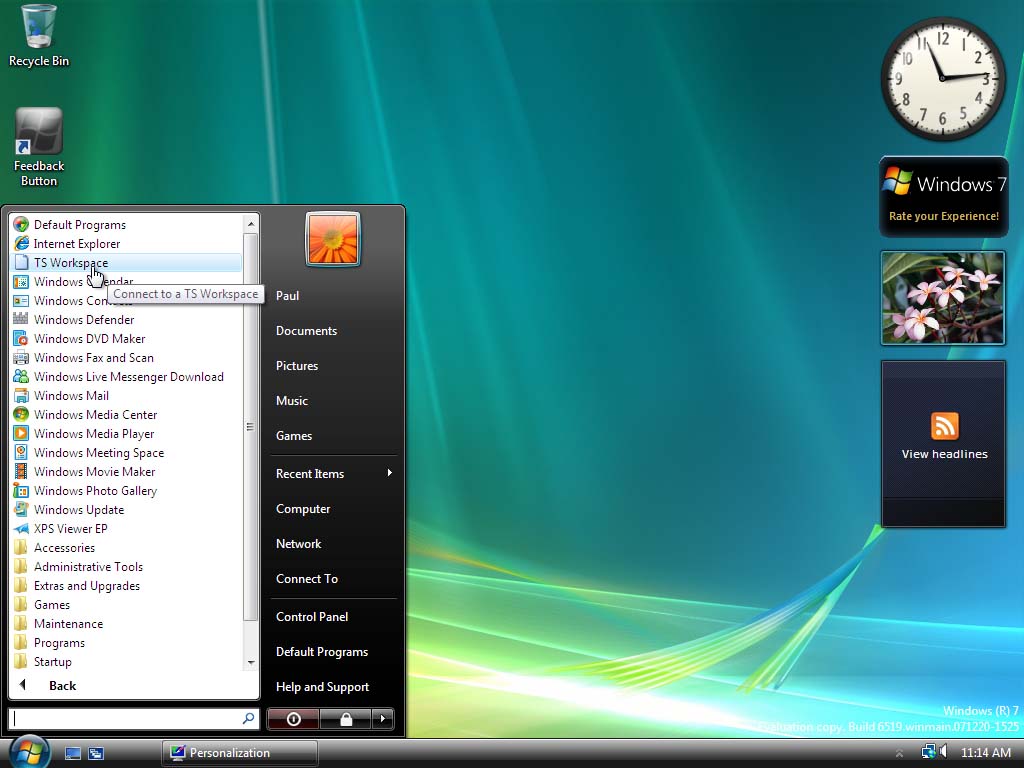

In order to ensure your app is delightful to use for every single user, you must take accessibility into account.
Win 7 servetome show ui update#
When the end user switches modes for their entire PC, the app's UI will automatically update as well with a transition animation. PCs (often referred to as "desktop", but includes laptops as well)īuilt-in animations can really give your app a polished look and feel, and provide consistency with first-party apps throughout Windows.Īn example of a built-in animation in UWP, WinUI 2, and WinUI 3 is the animation that occurs when the end user switches between light and dark mode.
Win 7 servetome show ui windows#
Some common devices for Windows apps to run on are: Some examples of input are:Įnd users access Windows apps on a variety of devices, and UI frameworks may only support certain ones. It provides a translucent texture.Įnd users may interact with your app and provide input to your app (such as selection or typing) through different methods. Acrylic is a brush that you can use on surfaces within your app or as the background of your app. Here's an example of a style component called Acrylic, available in WinUI 2 and WinUI 3. Styles consist of colors, typography, icons, Fluent materials, and more that can be used throughout your app's design to create a truly unique experience. When you place this control into your app, it automatically receives the default design that the UI framework provides. Here's an example of a Button control that's available in UWP, WinUI 2, and WinUI 3. Controls are the building blocks of the user interface. These components are usually built into each UI framework.Ī control is a UI element that displays content or enables interaction. There are five main components that go into creating a user interface for your Windows app. UI frameworks provide your app with built in controls, styles, animations, input handling, and more. When building a modern Windows app, you have a selection of UI frameworks to choose from. The frameworks discussed here include the Windows UI Library (WinUI) for both Windows App SDK (WinUI 3) and UWP (WinUI 2), Windows Presentation Foundation (WPF), and Windows Forms (WinForms). App platforms typically include a UI framework, while UI frameworks are either standalone (not shipped with an app platform) or can be used with multiple app platforms (see Choose your app platform). Microsoft produces both UI frameworks and app platforms. It appears to work, just cannot see the application on the WinSta0\\Winlogon desktop.This article provides an overview of the Windows UI frameworks that are currently maintained by Microsoft and compares their capabilities. Also, if I look at taskmgr I see the program started along with CreateProcessAsUser not returning any errors. Vista must have the Winlogon Desktop permissions set differently, I added "SeTcbPrivilege" but that did no good. However, when I run the program on XP it works. Anyone have any ideas? When I change the desktop to WinSta0\\Winlogon the application does not appear on the logon screen. I got this working on Vista but I would like to launch a progrma to the WinSta0\\Winlogon desktop. Then I use CreateProcessAsUser with Winlogon's duplicate token to launch my process into session 1.Then I make sure I sent the startupinfo parameter lpDesktop to winsta0\Default since I need to launch my process there.So I obtain the process ID of Winlogon and Duplicate the token. Since I need to launch the application under a system account, I use the token from Winlogon, since Winlogon runs under the system account.Get the Active Console SessionId using WTSGetActiveConsoleSessionId.These codes are working fine when ever we are dealing with WinSta0\\default desktop when user is log on but my requirements are different. Here are couple of links i have already went through. My goal is to run a program before user even log on to system in vista.


 0 kommentar(er)
0 kommentar(er)
